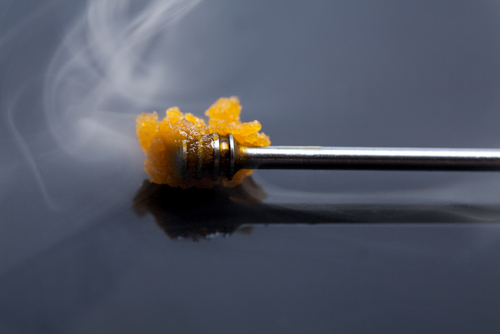

Advantages of ShatterThe main advantage of shatter cannabis concentrates over rosin is that they’re plentiful, relatively cheap to make, and therefore cheaper for customers to buy. Furthermore, the cost-effectiveness of solvent extracts means they won't be going anywhere soon. When you're smoking the cannabis plant for the taste, you really want those other compounds to be in there.The good news is that, when solvent extraction is performed carefully in a closed-loop system, there shouldn't be many (if any) residual solvents. CO2 comes with the advantage that it evaporates off the final product without leaving residual chemicals, which is why CO2 oil is so popular in the cannabis industry for use in vape pen cartridges and syringes.The downside of concentrates made with CO2 is that the process strips the extracts of terpenes, leaving a concentrate that doesn't have as much flavor or smell. What About Carbon Dioxide Extraction?Most of the cannabis concentrates mentioned so far (shatter, wax, crumble, live resin) can be made with pressurized carbon dioxide instead of butane and propane. However, dispensaries are now starting to sell live resin vape cartridges, making this delicacy more accessible to the public.When rosin is made from fresh-frozen cannabis, it’s known as live rosin and serves as a solventless alternative to live resin. Because of its rich flavor profile, it typically costs more than regular concentrates like shatter and wax. The difference is that live resin is extracted from fresh plant material that was cryogenically frozen at the time of harvest, rather than dried cannabis flower.Live resin is valued for its fragrant, terpene-rich composition compared to regular solvent extracts. Live resin is actually a solvent extract just like shatter. Live ResinMore of a newcomer on the cannabis scene, rosin is often confused with another product called live resin. Today, the rosin extraction process has grown to a commercial scale with commercial rosin press models that apply exact amounts of heat and pressure to create a solventless extract with specific consistencies. The name for the solventless extract was inspired by the way violin rosin is produced.In the early days, people in the cannabis community made their own rosin using a hair straightener, parchment paper, and regular cannabis flower. If you complete the extraction at a high enough temperature, you can even make solventless shatter. What Is Rosin?Rosin is a translucent concentrate with a sappy, waxy, or glassy texture that is produced by pressing cannabis flower mechanically between two very hot surfaces. Other differences between shatter and other solvent extracts include the time and temperatures applied during the purging process that result in the unique texture of each. The extract is then purged with heat and air pressure to remove any residual solvent leftover at the end.In contrast to other solvent extracts like budder and crumble, manufacturers have to be careful not to agitate the cannabinoids once extracted, as moving it would cause the concentrate to crystallize and become opaque. In this process, a light hydrocarbon that can dissolve other substances, usually butane or propane, is blasted through cannabis flower material to extract the tetrahydrocannabinol (THC). What Is Shatter?Shatter is a cannabis concentrate with a glass-like appearance that is produced with a solvent-based extraction process. But there are other important distinctions that must be addressed as well.

The main difference between shatter and rosin is that shatter is typically created with the help of a solvent (like butane, propane, or ethanol) while rosin is a completely solventless concentrate.

We’ve seen a lot of discussion regarding shatter vs wax, but what about shatter vs rosin? Rosin and shatter are two cannabis concentrates that look physically similar-they both consist of a stiff translucent wax that gives a delicious stretch and an equally-as-delicious high when dabbed.


 0 kommentar(er)
0 kommentar(er)
